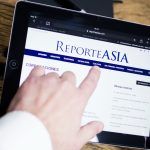With Malaysia and Thailand Having recently launched their candidacies to join the BRICS group of developing economies, discussions are intensifying on the prospects and possibilities of a broader cooperation framework that could involve BRICS+ and ASEAN. Indeed, the active participation of ASEAN countries in the BRICS+ format in 2022-2023 created the conditions for deepening the interaction of the ASEAN bloc not only with the BRICS countries, but also with other integration groups from the Global South.
As I have repeatedly argued since 2017-2018, a possible modification of the coordinated mechanism between ASEAN and BRICS regional integration agreements could be the BEAMS framework, which brings together BIMSTEC (India/South Asia), the Eurasian Economic Union (Russia/Eurasia), the ASEAN-China FTA (East Asia), MERCOSUR (Brazil/South America) and the Southern African Customs Union (South Africa). The creation of such a network of regional integration blocs would significantly accelerate and expand economic cooperation between BRICS+ and ASEAN, and could also become the basis for stimulating trade and investment along the South-South axis.
Another potential area of cooperation between BRICS and ASEAN within the BRICS+ format could be increased participation of ASEAN countries in the BRICS New Development Bank (NDB). In recent periods, the membership of the NDB has increased with new members from Africa (Egypt), the Middle East (United Arab Emirates, UAE), South America (Uruguay (possible member)) and South Asia (Bangladesh). There remains significant scope for adding new members to the BRICS NDB from the East Asian region, in particular ASEAN members such as Indonesia, Thailand, Cambodia and Malaysia, countries that have already participated in the 2022 BRICS+ summit. This, in turn, will expand the possibilities for BRICS-ASEAN economic cooperation through development institutions in areas such as transport connectivity projects, digital economy and human capital development.
The creation of more effective anti-crisis mechanisms for interaction between ASEAN and the BRICS could constitute another avenue for supportive cooperation for the economies of the Global South, but also at the global level.
In an effort to maintain a balanced and neutral position on the international stage, ASEAN could explore options for closer cooperation through mechanisms that bring together the Global South and advanced economies. ASEAN has made significant progress in this direction by establishing the Regional Comprehensive Economic Partnership (RCEP) with China, Japan and South Korea.
At the same time, there is scope to complement active ASEAN-EU ties with greater ASEAN engagement with platforms launched by the Global South. Possible areas of ASEAN involvement in linking cooperation mechanisms between developed and developing countries include the role of the Chiang Mai Initiative in creating a platform for Regional Financing Arrangements (RFAs) together with the European Stability Mechanism and the IMF. The Chiang Mai Initiative Multilateralisation (CMIM) has actively promoted dialogue among major RFAs with the IMF and can also play an important role in coordinating economic cooperation and anti-crisis efforts of the Global South.
ASEAN: Epicenter of Peace, Cooperation and Development
Another link between the Global North and the Global South involving ASEAN and the BRICS could be the interaction between regional development banks.
Such a platform, which would include participation by developed and developing countries, could include regional development banks involving ASEAN countries, such as the Asian Development Bank and the Asian Infrastructure Investment Bank. On the part of developing economies, the key player in such a platform could be the BRICS New Development Bank, while on the part of advanced economies, regional development banks could be represented by the European Bank for Reconstruction and Development and the European Investment Bank.
ASEAN could also become a leading force in promoting cooperation among regional integration mechanisms at the global level. In this regard, given its neutrality and brokering capacity, ASEAN could take the lead in creating a global platform for regional integration arrangements, such as the R20 (Regional Twenty) format within the G20.
In the digital space, Singapore’s experience in creating digital economic agreements could be expanded to include not only country-specific trade agreements, but also regional and interregional ones (digital “integration of integrations”). ASEAN could also play a more active role in global and multilateral organisations such as the WTO.
In particular, ASEAN, together with its BRICS+ partners, can build alliances within global institutions with other regional groupings in the Global South to push the agenda of less protectionism and greater trade and investment openness.
ASEAN’s progress in strengthening regional stability in Southeast Asia and the extensive network of global alliances built by the group and its individual members could give it arguments to claim a greater global role in the coming years. The key to making this scenario a reality could be more active cooperation between ASEAN countries and the BRICS bloc within the BRICS+ format. The rapprochement between the BRICS and ASEAN countries is greatly facilitated by the growing number of integration projects in the Global South, as well as by the reorientation of trade and investment flows from the BRICS countries towards interaction along the South-South axis.
And while there is ample scope for expanding economic cooperation between the BRICS and ASEAN, there are also a number of factors that will need to be taken into account when developing this path. First, there is ASEAN’s de facto course towards neutrality in the context of the escalating US-China confrontation and the concern of a number of ASEAN countries about China’s growing regional role in Asia. It is also worth noting that, as a regional bloc, ASEAN has made more progress in the area of interaction with the EU and a number of developed countries compared to the level of interaction with the BRICS countries and their regional arrangements.
To properly address these issues, it is important for the BRICS countries to steer the development of BRICS+ towards greater openness, not only with developing countries, but also with developed economies. In this regard, ASEAN countries can play a key role in bridging the gap between the Global North and the Global South. This role can be realized both within the framework of international economic organizations and on the basis of broad associations of regional integration blocs and regional development institutions that include representatives of developed and developing countries.



![[Img #74675]](https://thelatestnews.world/wp-content/uploads/2024/12/They-discover-a-new-class-of-X-ray-sources-in-the-150x150.jpg)











Add Comment